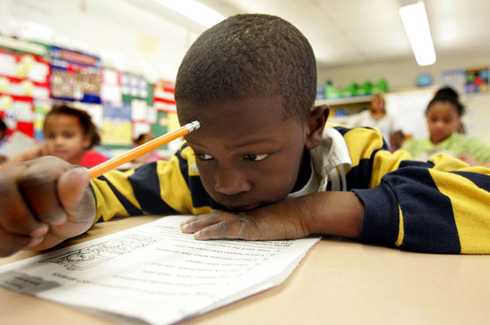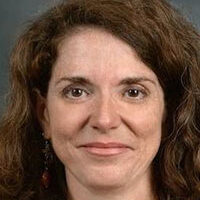
My son was six. His best friend, Isaac, was seven. They were both in first grade but in different classrooms. Like many boys, they were rambunctious but never unmanageable. Isaac’s mother and I used to joke about them being “two peas in a pod” – one white, one black.
But that’s not how they were seen. Instead, my son’s rambunctious behavior was viewed as normally boisterous. Isaac’s as wildly unruly. My son would be given the benefit of the doubt. Isaac was put under a microscope. You can guess which one is black.
The space for black kids to be able to interact in the world, to be kids – loud and tumultuous or quiet and moody, to have an attitude or not – is much smaller than for white kids like my son. There are rarely second chances. Instead they get labeled as troubled or troublemakers and held to a standard that is never expected from white kids.
This memory crashed onto the shores of my consciousness while watching the viral video from South Carolina’s Spring Valley High School, when a police officer grabbed a student from her desk, dragged her across the floor, and placed her under arrest.
In her Oct. 29 New York Times op-ed, “Where Are Black Children Safe,” Roxane Gay incisively writes, “Schools are not merely sites of education, they are sites of control. In fact, they are sites of control well before they are sites of education. And for certain populations – students of color, working-class students, anyone on the margins – the sites of control in the school system can be incredibly restrictive, suffocating, perilous.”
What confluence of policies, practices and laws has come together that brought to a boil today’s toxic caldron of “control” – and criminalization? Three come to mind, each with its own start dates and rationales, but continuing on the continuum of racial, gender and class oppressions. These are “zero tolerance” policies, “disturbing schools” laws, and the practice of relying on school resource officers to enforce these questionable laws and policies.
Let’s start with “disturbing schools.” The teenager thrown out of her desk and her classmate, Niya Kenny, were both arrested and charged with a misdemeanor crime based on a state law that makes it unlawful “to interfere with or to disturb in any way or in any place the students or teachers of any school or college in this State, [or] to loiter about such school or college premises or to act in an obnoxious manner.” If found guilty, these students could receive a $1,000 fine and 90 days in jail.
(Interestingly, the Ferguson police used the supposed crime of being “obnoxious” as a pretext to crack down on the protesters, and thereby initiating the violence. Another interesting aside is South Carolina’s “disturbing schools” law was passed in 1962, amidst the fights to integrate schools, buses, lunch counters, etc. Is there not a clear line between these laws and the old anti-loitering laws that put thousands of black men on Southern chain gangs during the Jim Crow era?)
To interfere, disturb, loiter or be obnoxious all sound like everyday behavior in schools everywhere. But reaching the level of “crime” seems to be in the eye of the beholder. There is plenty of data that shows black kids are much more likely to be seen as obnoxious, interfering, disturbing or loitering than white kids. Therefore if a black student, like the young woman in South Carolina, refuses to do something, a school resource officer (SRO, a police officer assigned to schools) is more likely to get involved.
These police officers’ original job description was to insure the safety of students and school employees, to mentor students and teach crime prevention. SROs became a growing career in the 1990s after schools became sites of gun violence: Columbine, Colo., and Paducah, Ky., are often mentioned as examples of why and when schools turned to police in the schools. Now mission creep has crept into the job description, and officers are called in to deal with “obnoxious” – not dangerous or criminal – behavior.
Pointing to a larger context in which schools and SROs operate, Mishi Faruqee, the national field director for juvenile justice reform group Youth First Initiative, told the website TakePart, “The horrific incident is not about one bad officer, but also about larger policies that criminalize students in schools in South Carolina and across the country. Under South Carolina’s Disturbing Schools law, even routine disciplinary problems are treated as crimes.”
One of those “larger policies” is zero tolerance, which started with that widely discredited Reagan-era “War on Drugs” and moved to the schools in the 1990s. Like the SROs, zero tolerance was a response to gun violence and related issues of gangs and drugs.
Despite zero evidence that zero tolerance policies improve school safety and discipline, and overwhelming evidence that the harsh measures are more likely to meted out disproportionately for African American students, they remain firmly in place today.
This policy creates an atmosphere that puts huge pressure on school officials and teachers of all races and nationalities (the Spring Hill principal is African American) to crack down on unruly behavior.
According to the report “Zero Tolerance, Zero Evidence” from Indiana University, “serious infractions that are the primary target of zero tolerance (e.g., drugs, weapons, gangs) occur relatively infrequently.” But that study showed that schools “punish both minor and major disciplinary events equally.”
The most frequent “minor” disciplinary issues that schools deal with, according to the report: “tardiness, class absence, disrespect and noncompliance.”
“A broad policy that seeks to [do so] will, almost by definition, result in the punishment of a small percentage of serious infractions, and a much larger percentage of relatively minor misbehavior,” the report concludes.
Rethinking, reforming, repealing these policies, practices and laws are in everyone’s interest because they would make schools less “sites of control” and more “sites of education.”
Photo: Jose F. Marino/AP










